Ultimate Purity as a Practice: Vajrasattva – the only practice most people need and the most powerful healing and purification method in Vajrayana Buddhism

In Buddhism, all practice can be considered purification. Whether we are practicing the Eightfold Path taught by Shakyamuni Buddha, or the five transformations of the Five Dhyani Buddhas, or a Yidam meditation in personal practice, all of these are ultimately purification of the ten poisons, our skhandas, our past negative karmas. Healing is purification. Pacification is purification, Wrathful activity in the Buddhist context is purification.
When we think of purification, the image that jumps to mind is pure, white Vajrasattva.
Chanting Vajrasattva’s 100 Syallable Mantra beautifully in Sanskrit:
Vajrasattva is the Ultimate Buddha
Vajrasattva — like all Buddhist deities — defies the notion of ego. Therefore, there is no “who” and there is no “what.” It can be said that Vajrasattva, in ultimate reality is no different from any other Buddha. It can be said, in relative reality, that Vajrasattva can purify all our defilements, obscurations and obstacles.
He is also the Sambhogakaya aspect of the ultimate Buddha, by whatever name we choose to label him. Vajrasattva, is the ultimate manifestation of Buddha, the Buddha from which the Five Dhyani Buddhas, Vajrasattva as a Bodhisattva, Avalokiteshvara and Tara, and every Enlightened emanation. In some lineages, he is also the label used for the Dharmakaya aspect of Buddha — while other traditions the Dharmakaya label might be Vajradhara, Samantabhadra or Mahavairochana, all names for the same essence.

It can also be said that Vajrasattva is none other than ourselves, visualized as a pure Buddha. It can be said that Vajrasattva is an emanation of Akshobya — or of Vajradhara, or of Samantabhadra. All of these are true at the same time and none of them really define Vajrasattva. In many ways, he is the ultimate expression of the idea of Yidam — a personal and effective meditational deity beyond ego, self, and illusory reality.
In Tibetan Buddhism, Vajrasattva’s role as the “great purifier” is top-of-mind — a necessary first step in Buddhist practice, working on the negative karmas and obstacles that obscure our Buddha Nature. It is one of the core “foundation” practices of Vajrayana. Yet, Vajrasattva practice is much more than this.
All Buddhist practices could ultimately be described by the goal “purification of the five aggregates” — through various forms of meditation and virtues (actions and thoughts.) Purification is a core concept.
[Several teaching and mantra videos below.]

Vajrasattva meditation and mantra is the best-known of the purification practices in Tibetan Buddhism — practices that psychologist Robert Preece in his book, The Psychology of Buddhist Tantra, demonstrated are based on sound psychological concepts:
“The primary obscuration to be purified is dualistic thinking and its consequences… Increasingly, our health, both physical and psychological, is affected by the environments in which we live and work. The intensity of emotional stress from work will invariably leave a residue within our nervous systems… Healing and purification visualizations are usually of light and blissful nectar washing through the body… this gradually cleanses, heals or purifies…”
Vajrasattva Mantra chanted 21 times in Sanskrit with visualization images:
When Shakyamuni Buddha sat under the Bodhi tree, seeking Enlightenment, the sutras record the many things he visualized as he sat. Many of these, such as Mara’s “attack” can be seen as defilements being purified — a core practice in Buddhism. Foundation practice in Buddhism is generally thought of as the process of purifying obstacles and misconceptions and negative karmas, and generating merit. Ultimately, even generating merit is a purification practice itself.
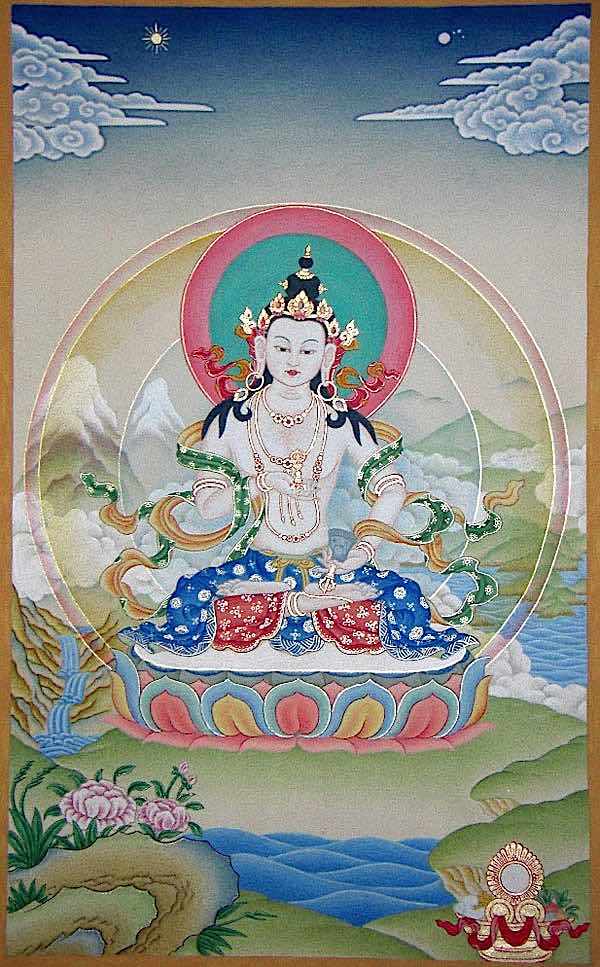
Although all Buddhist practices can be thought of as “purifying”, Vajrayana visualization practices and mantra are particularly effective, incorporating meditation that fully engages all of Body (breath and posture), Speech (mantra), and Mind (visualization). [Full video teaching on Purification from Venerable Zasep Rinpoche below.]
Why do we describe purification practices as healing practices? Ultimately, the purification of negativities and obstacles is the most perfect of healing practices. It is said that our defilements and negative karmas are the cause of our suffering, including illness.
Vajrasattva, the great purifier
Vajrasattva is one of the earliest practices in Vajrayana Buddhism and is also central to Shingon Buddhism. Vajrasattva is a beautiful manifestation of Vajradhara (in the dKar-hGya-pa and DGel-lugs-pa schools of Vajrayana) or of Samantabadra (in the older schools and Shingon.). Vajradhara and Samatabadra are two names for the same concept — the ultimate Dharmakaya aspect of Buddha.
Purifying mental defilements and bad karma
The five aggregates [see below] are the very things that make up the sentient being. Obstacles and incorrect perceptions of the true nature of reality prevent us from wisdom — and ultimately — Enlightenment. For this reason, it could be argued that purification in all its forms is the main and most important Buddhist practice. This can take many forms: mindful meditation, insight meditation, visualized and deity meditations, mantra — or ultimately all of these, which represent Body (mindfulness), Mind (insight and visualization) and Speech (mantra.)

Purification is the “ultimate” remedy. Psychological treatments often include elements of “confronting and purifying” negative past trauma. The principle, in Buddhist terms, is similar. Our “selves” — in fact, our very existence— is thought of in terms of aggregates. To avoid the impure obstacle of “ego-clinging” we are taught that all beings are made up of “five aggregates” – none of which contain the “I” or “self.” Each of these aggregates can collect “impurities” — which can be thought of as wrong views and illusory. Purification practice helps us meditate on those impurities, and clear the incorrect perceptions from our confused mindstreams.
Those aggregates (“Skandhas” in Sanskrit) are:
- Form: or matter (in Sanskrit “rupa” and Tibetan “gzugs”): our material form or body
- Sensation: or feeling (Sansktrit “vedana and Tibetan “tshor-ba”): sensory experiences
- Perceptions: or how we comprehend and process things (Sankrit “sanna” or Tibetan “du-shes”): often these perceptions lead to labels, which are an obstacle.
- Mental Formations: conditioning and karmic activities (good or bad) (Sanskrit “samskara” and Tibetan “du-byed”): the mental imprints and reactions that cause us to act.
- Consciousness: awareness and discrimination (avoiding the word “self-awareness” Sanskrit “Vijnana” and Tibetan “rnam-par-shes-pa”): there are six types of consciousness.
A video teaching on purification from Venerable Zasep Rinpoche:
Who is Vajrasattva?
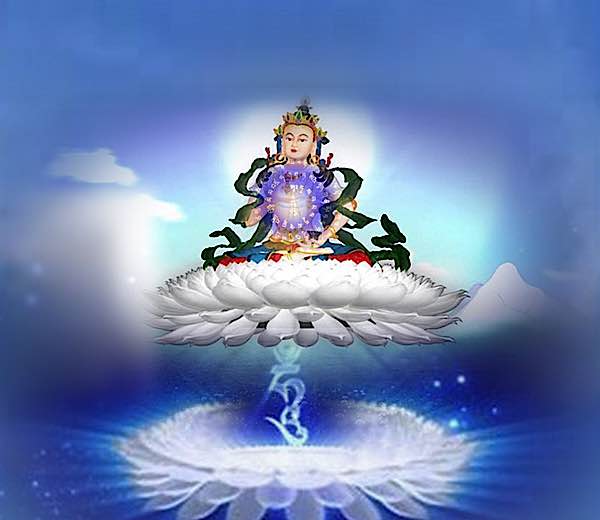
Perhaps, what defines Vajrasttva is the result. Vajrasattva, for many centuries, has been the “go-to” practice for Buddhists for purification practices. Since most of our progress in Buddhism relies on purification, it would be fair to say that in Vajrayana Buddhism, Vajrasattva practice is of pre-eminent importance. It is often the first deity practiced by students. In foundation practices, for Tibetan Buddhism, many schools have a requirement that the student performs 100,000 mantras of Vajrasattva; which is no small feat given the length of the mantra (which, of course, should be first committed to memory.)
What makes the practice so perfect?
We know we can rely on the Vajrasattva practice because of a lineage of masters who have used the practice for thousands of years — many of whom achieved great insights on the path. But what makes it so profoundly effective?
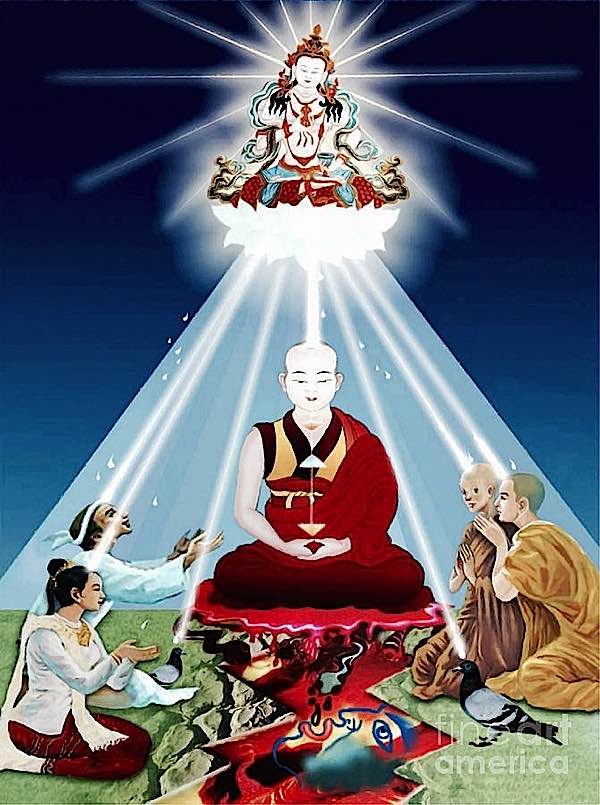
Vajrasattva Mantra
Vajasattva incorporates meditation of mind, body, and speech. Our mind is engaged by visualization of the beautiful deity Vajrasattva — the perfected ideal of an Enlightened being. If we practice deeper, we visualize Vajrasattva with his consort, the Wisdom mother. We visualize purifying light from Vajrasattva entering the crown of our heads and filling us. We engage body with mudra, posture (sitting position) and breath. We engage speech with the sacred Sanskrit 100-syllable mantra of Vajrasattva:
oṃ
vajrasattva samayam anupālaya
vajrasattvatvenopatiṣṭha
dṛḍho me bhava
sutoṣyo me bhava
supoṣyo me bhava
anurakto me bhava
sarva siddhiṃ me prayaccha
sarvakarmasu ca me cittaṃ śreyaḥ kuru
hūṃ
ha ha ha ha hoḥ
bhagavan sarvatathāgatavajra mā me muñca
vajrī bhava mahāsamayasattva
āḥ
Translation
oṃ
O Vajrasattva honour the agreement!
Reveal yourself as the vajra-being!
Be steadfast for me!
Be very pleased for me!
Be fully nourishing for me!
Be passionate for me!
Grant me all success and attainment!
And in all actions make my mind more lucid!
hūṃ
ha ha ha ha hoḥ
O Blessed One, vajra of all those in that state, don’t abandon me!
O being of the great contract be a vajra-bearer!
āḥ
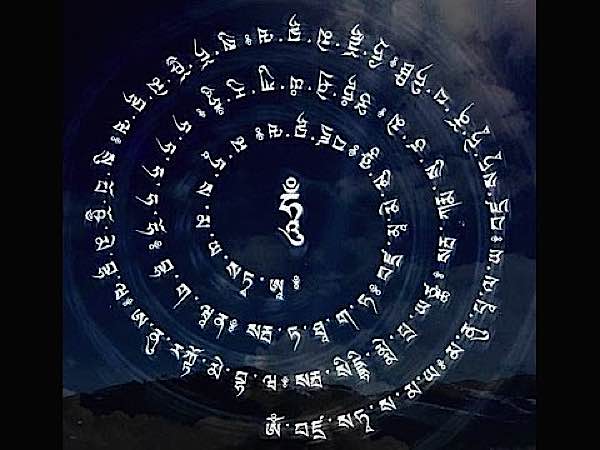
Or, we might pronounce it in the common Tibetan pronunciation (for example, Benza instead of Vajra), if our teacher gave it to us in this form:
OM BENZA SATA SAMAYA MANU PALAYA
BENZA SATA TEY NO PA TEETA DEEDO MEY BAWA
SUTO KAYO MEY BAWA
SUPO KAYO MEY BAWA
A NU RATO MEY BAWA
SARWA SIDDI MEY PRA YA TSA
SARWA KARMA SU TSA MEY
TSEE TAM SHRI YAM KURU HUNG
HA HA HA HA HO BAGAWAN
SARWA TATAGATA BENZA MA MEY MUN TSA
BENZA BAWA MAHA SAMAYA SATA AH HUNG PEY
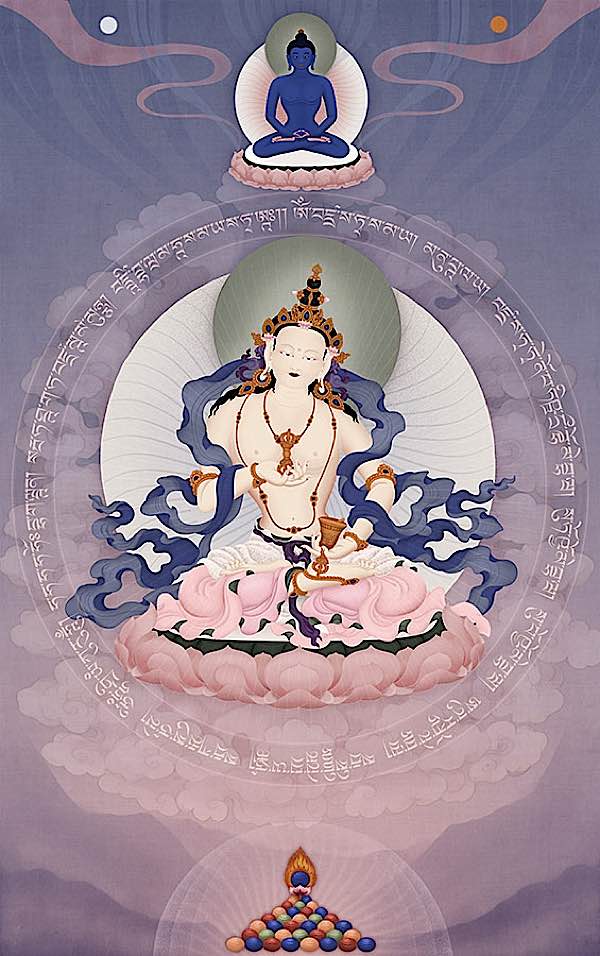
What does the mantra mean?
The mantra has been translated in various ways, but it is more important to focus on the meaning of the mantra. In a teaching on Vajrasattva mediation and recitation, Lati Rinpoche explained the meaning this way:
OM = syllable of the vajra body (It is spelled A-U-M, which represent the body, speech and mind of the
Buddhas.)
VAJRA = indivisible nature, the inseparability of wisdom and bliss.
SATTVA = the being who has the wisdom of inseparable bliss and emptiness.
SAMAYA MANU PALAYA = sustain me by the commitment (protect my commitment)
VAJRASATTVA TVENO PATISHTA = O Vajrasattva, may I achieve you, may I become closer to you
(cause me to be supported by you)
DRIDHO ME BHAVA = may this achievement be stabilized (remain firmly with me)
SUTOSHKYO ME BHAVA = may your nature become pleased (may you be pleased with me)
SUPOSHKYO ME BHAVA = may you make me into the nature of passion (may you be happy with me)
ANURAKTO ME BHAVA = may you make me the victor (have affection for me)
SARVA SIDDHI ME PRAYACCHA = grant me all the powerful attainments
SARVA KARMA SUCHAME = grant me all the activities (make all my actions good)
CITTTAM SHRIYAM KURU = may your glory abide within my heart (make my mind most glorious)
HUM = (represents primordial awareness)
HA HA HA HA HO = I shall delight in the powerful attainments and in all the activities (the five types of
wisdom)
BHAGAVAN SARVA TATHAGATA = calling out to all the Buddhas by name
MAME MUNCHA = do not part from me (do not abandon me)
VAJRA BHAVA = make me the one who can hold a vajra
MAHA SAMAYA SATTVA = call to Vajrasattva by saying, “O One with the great commitment.” The
significance of calling out like this is to say, “Just as I have requested, may this request be granted.”
AH = syllable of the vajra speech (shows the empty nature of all phenomena. The main function of
Buddhas’ speech is to teach that phenomena lack inherent existence.)
HUM = (blissful state of Vajrasattva’s wisdom)
PHAT = destroy all the delusions and sufferings.
The mechanics of the practice
With most Buddhist meditations there is a reason for every method. This practice is profoundly effective by virtue of its complex simplicity. The complexity of memorizing a 100-syllable mantra, then reciting it with full concentration while visualizing not only a perfect Buddha but also the mantra script and purifying light — all the while keeping our body relaxed and mindful, with perfect breathing. Yet, once mastered, it is one of the simpler practices. Complex, yet simple.
Many teachers tell their students Vajrasattva practice is all they need. After all, most lay Buddhists work day jobs and have family lives, so undertaking Vajrasattva practice is already a major — yet important — undertaking. But the main reason a teacher might say “Vajrasattva is all you need” is because it can be considered a complete and profound practice.
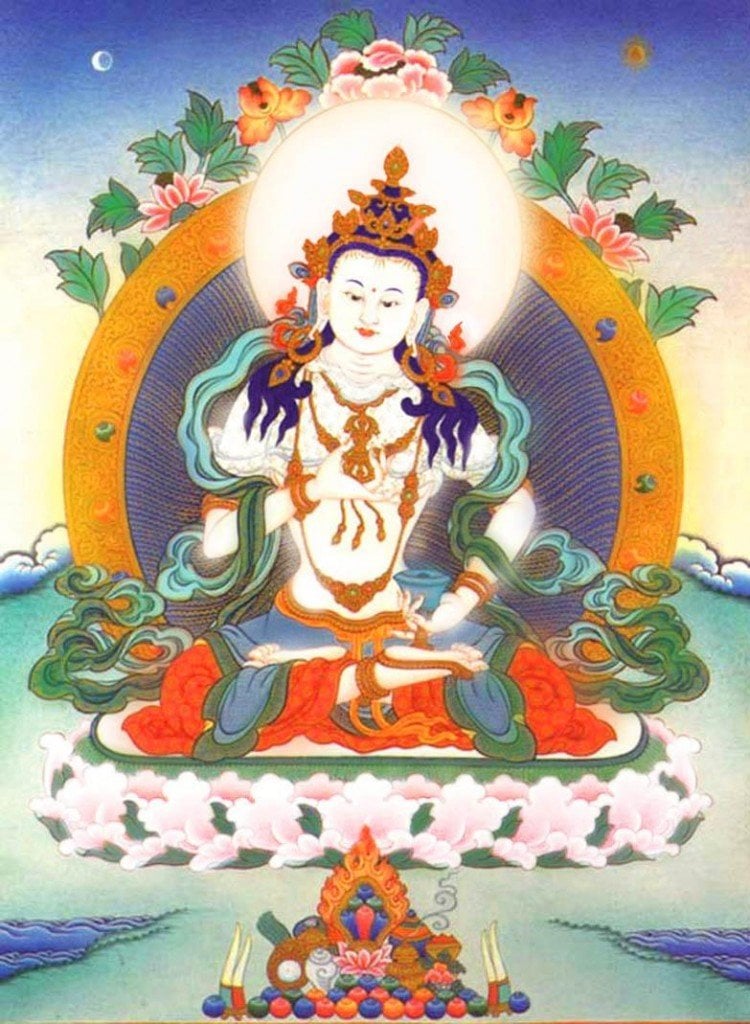
The Four Opponent Powers
Beyond the perfection of a practice involving all three of Body, Speech and Mind, Varjasattva practice also includes the profound “Four Opponent Powers”:
-
The Power of Dependence: Taking Refuge in the Three Jewels, Buddha, Dharma and Sangha.
-
The Power of Regret: recalling all of our negative actions in the past motivated by ignorance, attachment or aversion.
-
The Power of Remedy: the mantra and visualization and mental focus on purification.
-
The Power of Restraint: or undertaking to refrain from creating negative karma (actions) in future.
When we practice Vajrasattva, as we visualize and chant mantras, we meditate on the four opponent powers. We meditate on the importance of our refuge in the Three Jewels — our true protection. We consider all the things we regret, and we focus on (visualize) our regrets being purifying by the wondrous nectar or white light of Vajrasattva. We then make a promise to ourselves to refrain from negative karmas again — because we know this opportunity to practice Dharma in this human life is so precious.
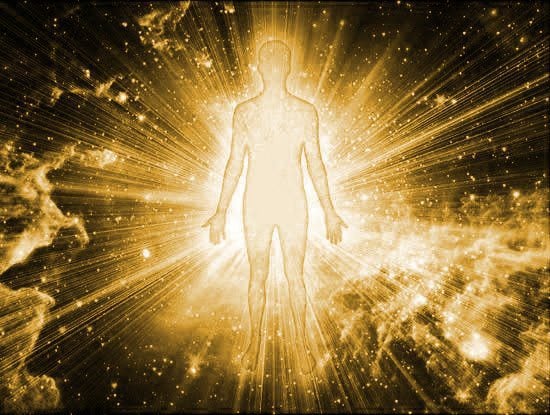
Visualizing the Remedy
When we visualize the power of Remedy — while chanting mantras and visualizing the light and deity — we focus on the light or nectar filling our bodies. Usually, the teachers instruct us to visualize. Lati Rinpoche explained it this way, in a teaching on the Vajrasattva practice:
“According to oral instructions, visualize the bodily negativities are purged during the visualization expelling downwards, the negativities of the speech while expelling upwards, the negativities of mind while expelling spontaneously. The negativities of body, speech and mind and their imprints are expelled by doing all three of the above visualization simultaneously. If you meditate like this, then divide the 21 recitations of the mantra into groups of five each: five repetitions for expelling downward, five for expelling upward, five for expelling spontaneously and five for all three simultaneously. Recite the mantra once more to make 21. Another way is to count seven each for the first three visualizations to make 21, without doing the three visualizations simultaneously.
“There are different ways to do it. You can choose. There are many visualizations that can be done during the Vajrasattva meditation and recitation. At the end of however many mantras you recite, develop the strong conviction, “I have actually purified all negativities.” It’s important to generate this conviction because having lingering doubts about whether the negativities have actually been purified is harmful.
“If this purification practice is undertaken properly, with all the four opponents powers complete, then there is no reason why you should not be able to purify the negativities.”
For a visualization intended for meditators who do not yet have Vajrasattva empowerment, see the last section with a description by Venerable Zasep Rinpoche (or watch the embedded movie above.)
Mantra chanting of 100-syllable mantra:
Is initiation necessary?
For Vajrasattva, initiation is not necessary, as long as you do not visualize yourself as Vajrasattva. Until you find a teacher who has lineage and can offer empowerment, it is quite effective and permissible to practice Vajrasattva visualization and mantra where you visualize the deity either in front of you or on top of your head, with nectar or purifying light flowing into you.” Venerable Zasep Rinpoche explained, “According to Tantra, one of the most powerful purifications is meditations on Vajrasattva. Recite the mantra of Vajrasattva, the 100-syllable mantra [mantra below transcript]. If you don’t have initiation, you can say the mantra, no problem, you can visualize Vajrasattva in front of you. [Or] Above your crown, as well.”
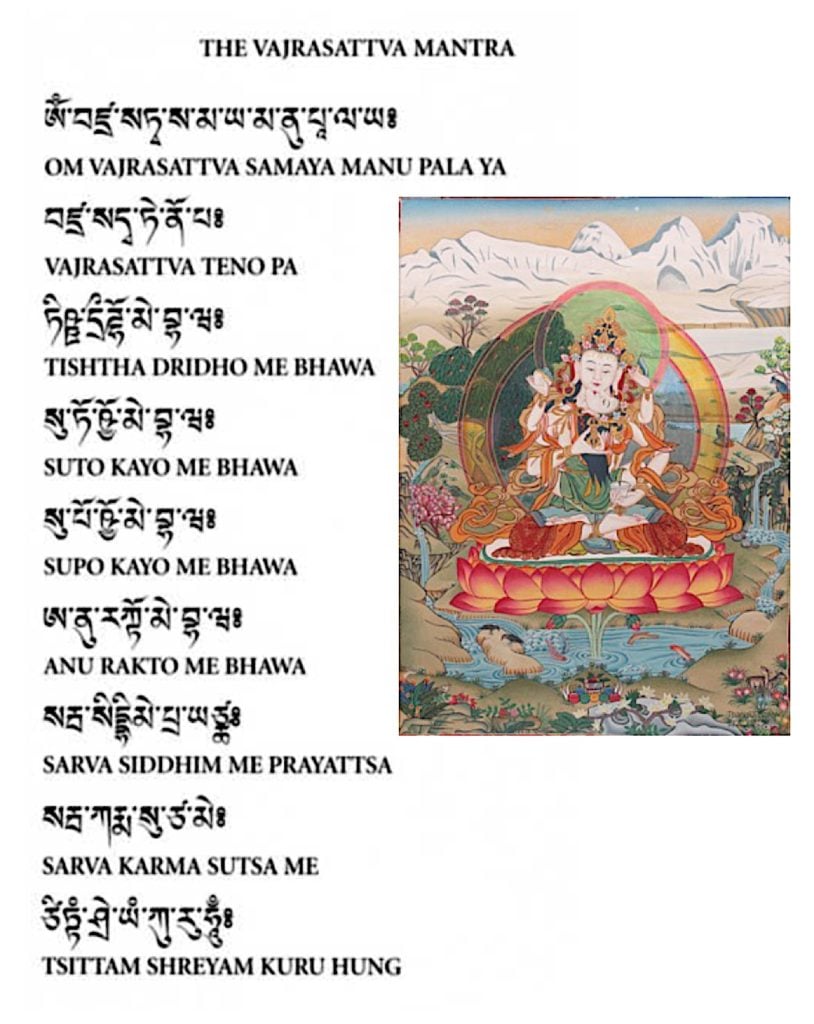
Ideally, though, empowerment not only makes the practice more profound and effective, it helps with the transformative understanding of Emptiness and ego-lessness. If we have empowerment, we can visualize ourselves as a deity — helping us understand the true nature of reality. Intellectually, we might understand the concept of Emptiness, but that’s not the same as developing a realization derived from real, empowered practice.
Teaching on the Vajrasattva Mantra at Sravasti Abbey:
Visualization for the uninitiated
Venerable Zasep Rinpoche offers this simplified visualization (or listen to the embedded video above):
“Imagine — as you say the mantra — imagine purifying nectar coming from the heart of Vajrasattva, and the nectar enters through your your crown [of your head] and enters into your body, first purifying the body. The nectar flowing down through the body. And as if flows down it purifies all the bodily karmas: disease, sickness, unwholesome karmas of the past, unwholesome karmas of the bodies are purified. Say the mantra, lets say 21 times.
Then you do the purification again, this time purifying the speech, the speech karmas. This time, the nectar comes down from the heart of Vajrasattva dissolves into you, into your body, and slowly fills up your body, and then [you visualize] the unwholesome karmas of the speech coming out from the mouth. They are expelled. Gone. Imagine your speech karma is purified.The third time, nectar comes down from Vajrasattva’s heart, dissolving into you directly into your heart, and then you mind is purified, mental karmas such as fear, attachment, ignorance, and confusion disappear, are dispersed. Disappeared straight from your heart. This is very powerful.
Say the mantra, the 100-syllable mantra of Vajrasattva, and then imagine Vajrasattva becoming smaller and smaller entering through your crown and dissolving into your heart. Imagine Vajrasattva is always with you as a personal yidam deity. This is very powerful way to purify your body, speech and mind. There are other purifications, but I think this is good enough for the beginner.”
7 thoughts on “Ultimate Purity as a Practice: Vajrasattva – the only practice most people need and the most powerful healing and purification method in Vajrayana Buddhism”
Leave a Comment
More articles by this author
Search
Latest Features
Please support the "Spread the Dharma" mission as one of our heroic Dharma Supporting Members, or with a one-time donation.
Please Help Support the “Spread the Dharma” Mission!

Be a part of the noble mission as a supporting member or a patron, or a volunteer contributor of content.
The power of Dharma to help sentient beings, in part, lies in ensuring access to Buddha’s precious Dharma — the mission of Buddha Weekly. We can’t do it without you!
A non-profit association since 2007, Buddha Weekly published many feature articles, videos, and, podcasts. Please consider supporting the mission to preserve and “Spread the Dharma." Your support as either a patron or a supporting member helps defray the high costs of producing quality Dharma content. Thank you! Learn more here, or become one of our super karma heroes on Patreon.
Lee Kane
Author | Buddha Weekly
Lee Kane is the editor of Buddha Weekly, since 2007. His main focuses as a writer are mindfulness techniques, meditation, Dharma and Sutra commentaries, Buddhist practices, international perspectives and traditions, Vajrayana, Mahayana, Zen. He also covers various events.
Lee also contributes as a writer to various other online magazines and blogs.



















Very enlightening article. It has enforced my practice of vajrasattva . Thank you very much.
Thank you!
Thank-you. your dedication is very very touching. Thank-you !
Thank you so much for this detailed explanation of the Vajrasattva purification practice and meditation.
Jairo Jmyngpwo Moreno in Central Florida.
Thank you for this explanation. Powerful to read it.
Thank you Sara!
It wasn’t till I got up to around 50,000 reps (in ngondro) of the Vajrasattva mantra before I finally began to encounter the brilliance and helpfulness of this refulgent deity. One could nearly base an entire practice on Vajrasattva quite successfully in my opinion if one knew of no other deities or practices. E ma ho!